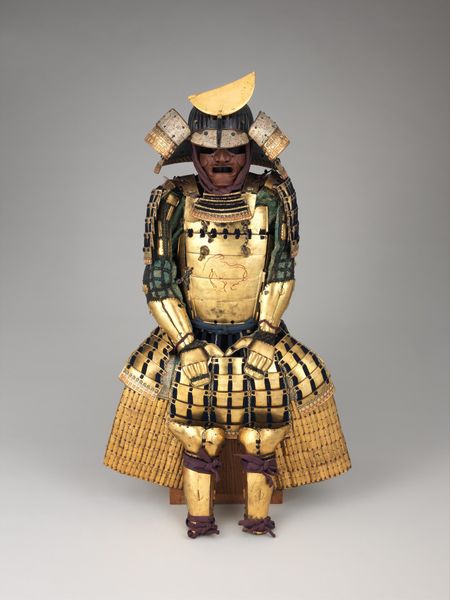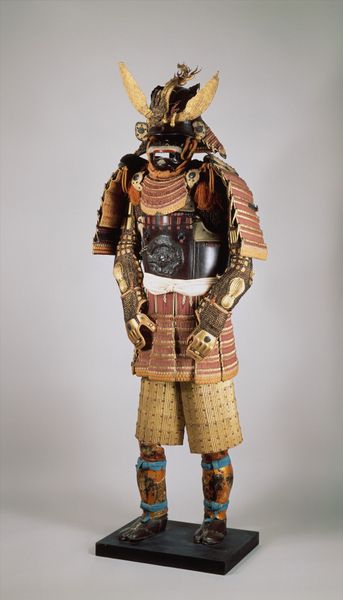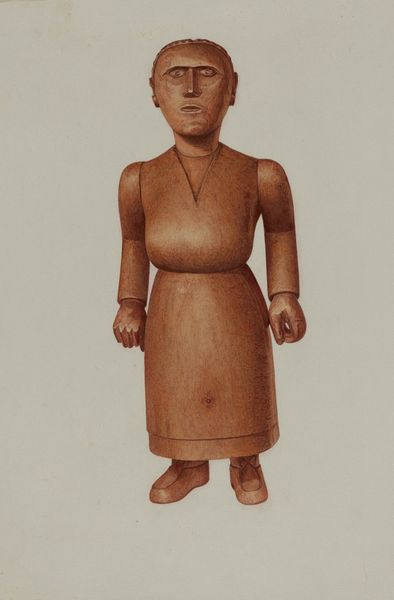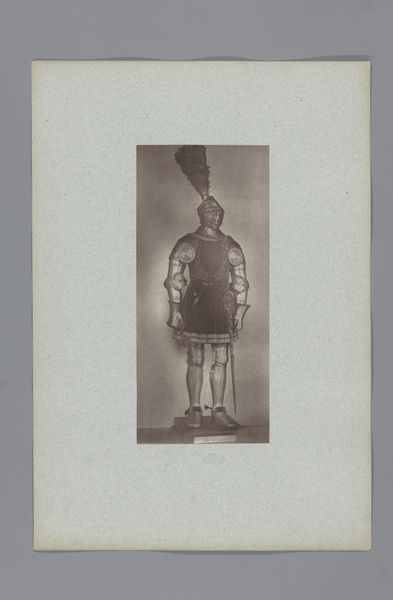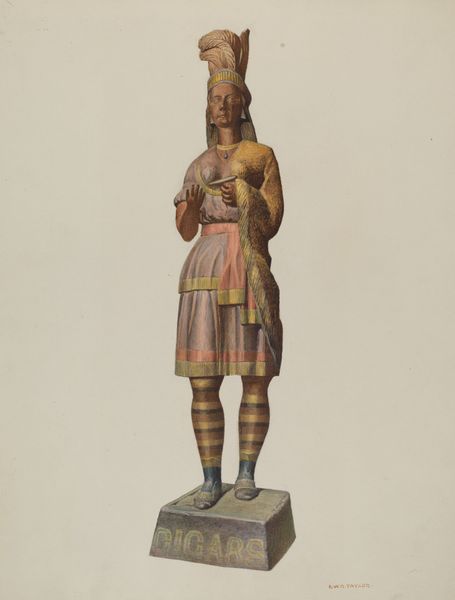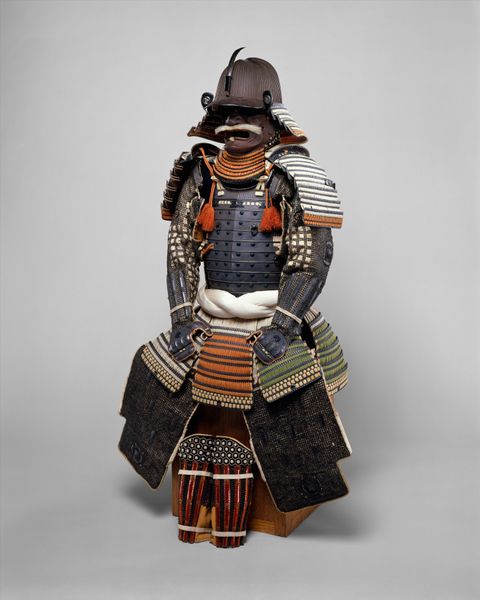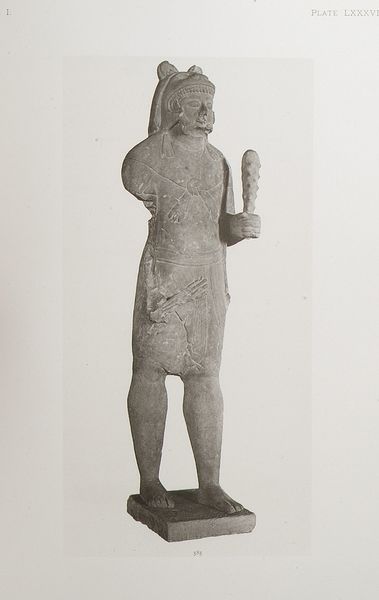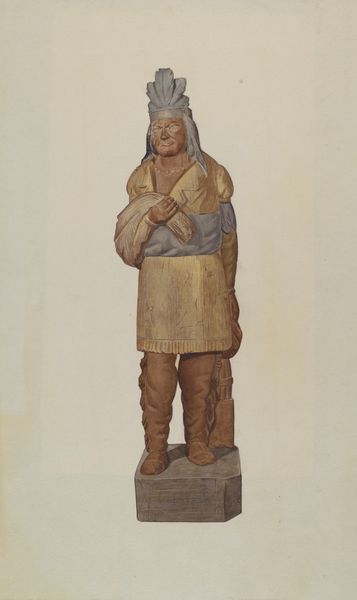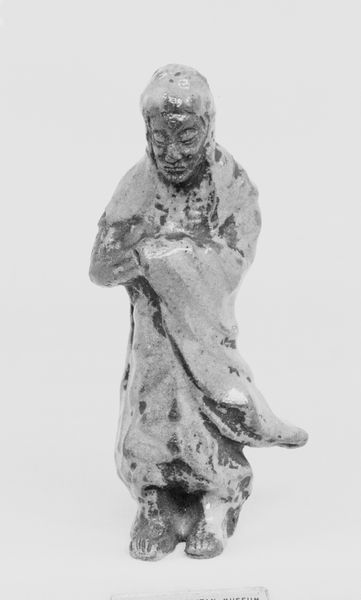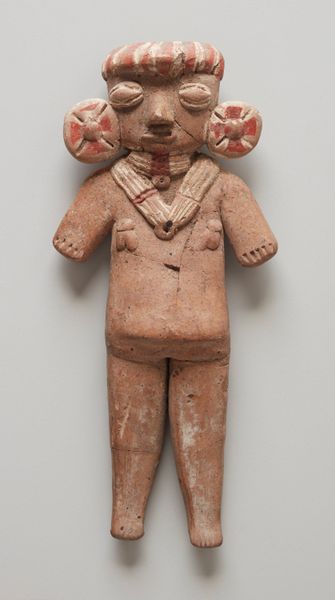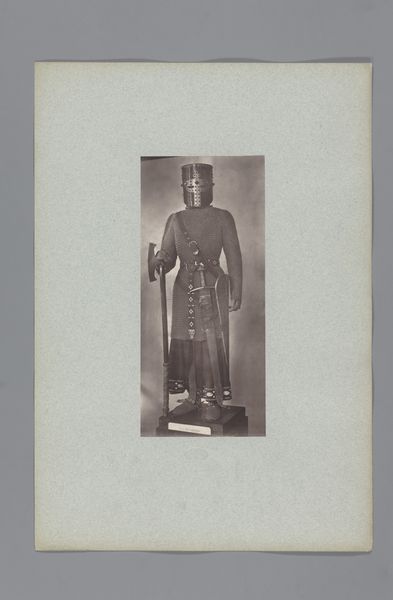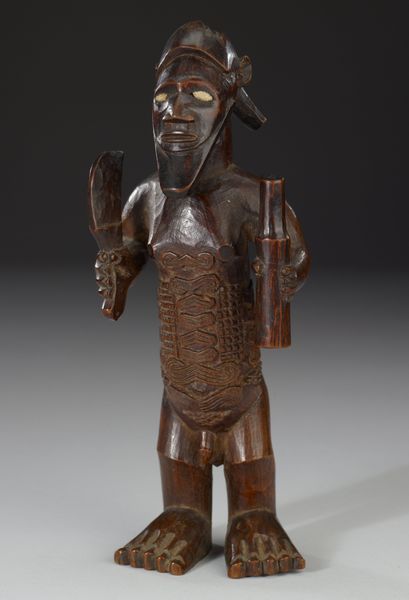
metal, sculpture
#
metal
#
asian-art
#
sculpture
#
armor
#
decorative-art
Dimensions: H. 65 1/2 in. (166.4 cm); W. 20 1/2 in. (52.1 cm); plastron; H. 26 3/4 in. (67.9 cm); W. 15 in. (38.1 cm)
Copyright: Public Domain
Curator: What an incredible example of Edo-period craftsmanship. This is a suit of Japanese armor, or gusoku, dating to around 1700 to 1750, crafted by Myochin Munesuke. Editor: Whoa, imposing! It’s standing so rigidly, almost like a silent warrior judging us. I can’t help but imagine the samurai it once protected… was he as stoic? As shiny? Curator: It’s made of metal, of course, reflecting the advanced metallurgical techniques of the time. Suits like these weren't just battle gear, they were potent status symbols. Each element of the armor—from the helmet, with those sweeping horns, to the meticulously articulated plates—speaks volumes about its owner’s rank and aesthetic sensibilities. Editor: The sheer detail is astonishing; like a wearable work of art. You see that layering and articulation, it’s designed to flow and move, but you've got all that engraved decoration working at the same time… There is this incredible tension between function and display. Curator: Indeed. Consider how the Myochin school, to which Munesuke belonged, had a long history of supplying armor to powerful feudal lords. Understanding the socio-political context helps to reveal just how essential the military class and the equipment was to maintaining a rigid social order. Editor: So, you're not just cladding someone in protection, you're wrapping them in power, history, legacy. But look closer, and the lines aren’t that straightforward anymore. How vulnerable the wearer might have felt? All of that ornate metal surrounding such raw, human feeling… It kind of punches you in the gut, doesn't it? Curator: It prompts contemplation on many fronts: The armor now resides in the Metropolitan Museum of Art, no longer defending a lord in battle but as a representation of complex artistic production in early modern Japan. Its display is yet another articulation of cultural heritage in the making. Editor: Right. What do we do with these old shells when the story has run through them? When the need and terror that called this form of iron bravery no longer casts so heavy a shadow? This beautiful thing reminds me: things change, but ghosts remain.
Comments
No comments
Be the first to comment and join the conversation on the ultimate creative platform.
